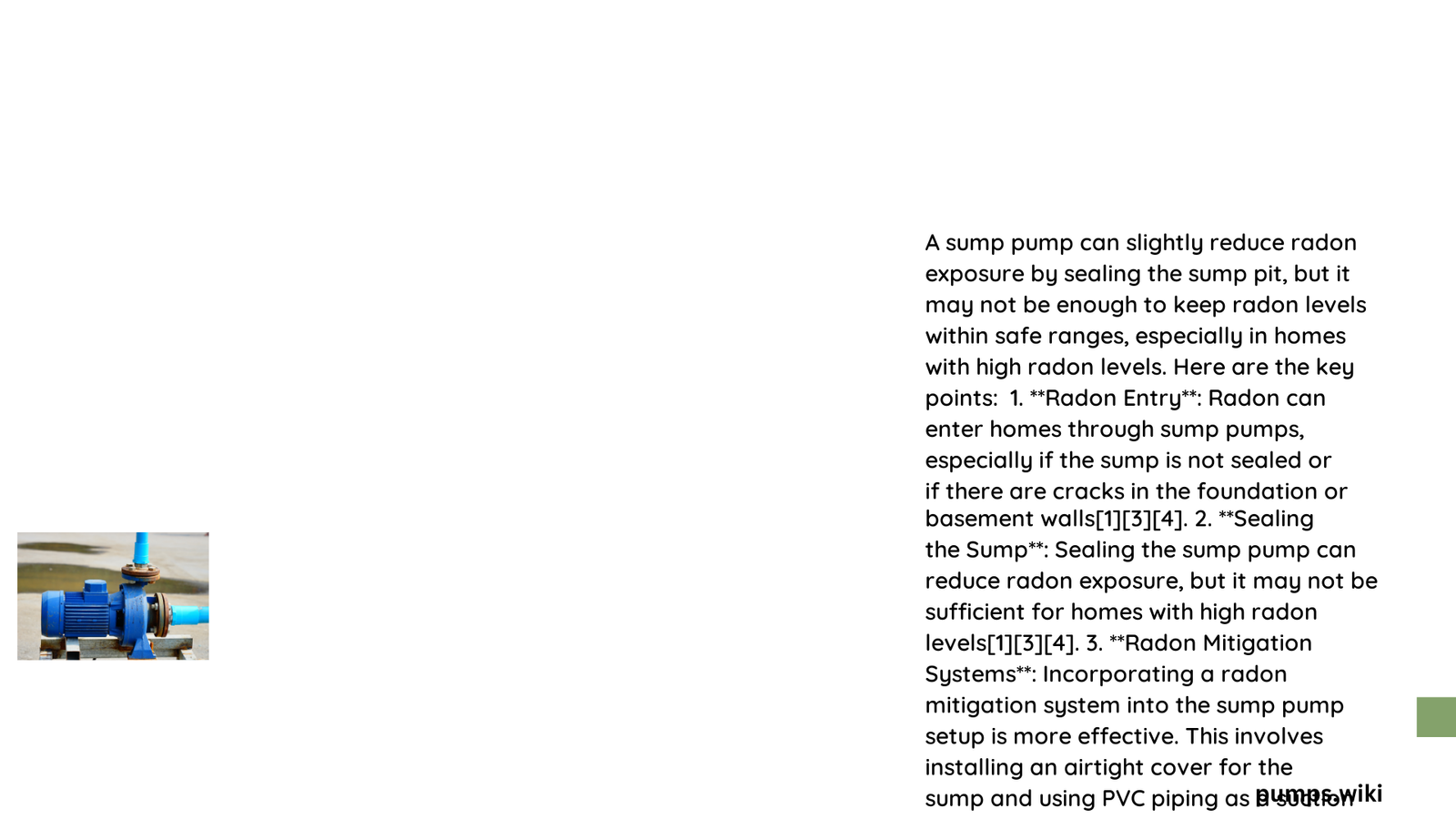Radon is a dangerous radioactive gas that can accumulate in homes, particularly in basements and lower levels. Homeowners seeking effective radon reduction strategies often wonder about the role of sump pumps in mitigating this invisible threat. Scientific studies reveal that sump pumps, when properly integrated into a comprehensive radon mitigation system, can dramatically reduce radon levels by up to 99%, offering a critical defense against this potential health hazard.
What is Radon and Why Should Homeowners Be Concerned?
Radon is a naturally occurring radioactive gas produced by the decay of uranium in soil and rock. It can seep into homes through:
- Cracks in foundation walls
- Gaps around pipes
- Sump pump areas
- Basement floor drains
How Effective Are Sump Pumps in Radon Reduction?
| Mitigation Method | Radon Reduction Percentage |
|---|---|
| Passive Ventilation | 53-55% |
| Sump-Hole Suction | 91-99% |
| Wind-Assisted Ventilation | Up to 95% |
Key Factors Influencing Radon Reduction
- Proper Sump Pump Sealing
- Install a sealed sump cover
- Ensure airtight connections
-
Minimize potential entry points
-
Ventilation System Integration
- Install radon suction pipes
- Use specialized vent fans
- Create negative pressure beneath the foundation
Can Sump Pumps Completely Eliminate Radon?

While sump pumps are highly effective, they are most successful when part of a comprehensive radon mitigation strategy. Experts recommend:
- Professional radon testing
- Comprehensive system design
- Regular maintenance
- Periodic radon level monitoring
Installation Considerations for Maximum Radon Reduction
Required Components:
– Sealed sump pump lid
– Suction piping
– Radon vent fan
– Pressure monitoring system
Cost and Maintenance Insights
- Average installation cost: $800 – $2,500
- Maintenance frequency: Annual professional inspection
- Fan replacement: Every 5-7 years
- Expected system lifespan: 10-15 years
Scientific Evidence Supporting Sump Pump Radon Mitigation
Research from multiple studies, including investigations in Spain and the United States, consistently demonstrate that sump-hole suction methods can reduce radon concentrations by over 90% when implemented correctly.
Potential Limitations to Consider
- Soil composition variations
- Home foundation design
- Local geological conditions
- Initial radon concentration levels
Recommended Next Steps for Homeowners
- Conduct professional radon testing
- Consult certified radon mitigation specialists
- Evaluate existing sump pump infrastructure
- Design customized mitigation strategy
Pro Tip: Always work with certified radon mitigation professionals who can provide tailored solutions for your specific home environment.
Final Thoughts on Sump Pumps and Radon Reduction
Sump pumps represent a powerful tool in the fight against radon, offering homeowners an effective method to protect their indoor air quality. By understanding their potential and implementing comprehensive mitigation strategies, you can significantly reduce radon-related health risks.
